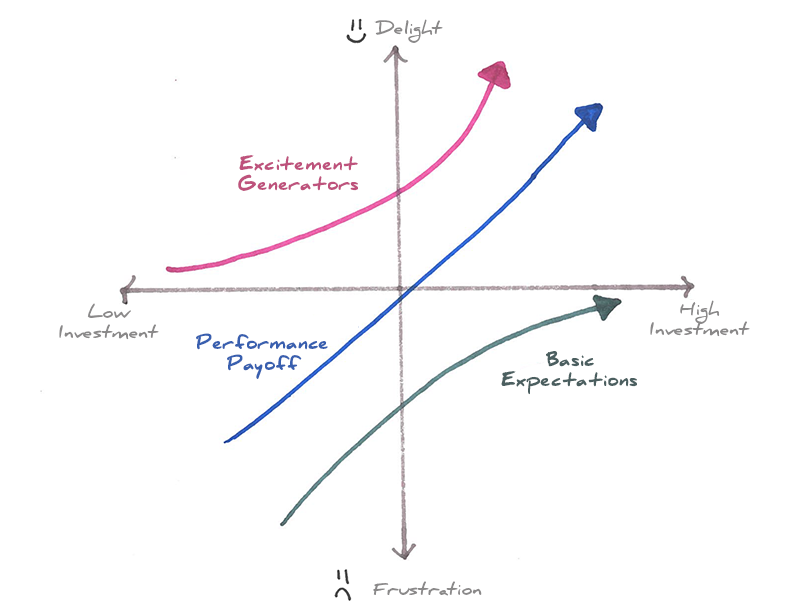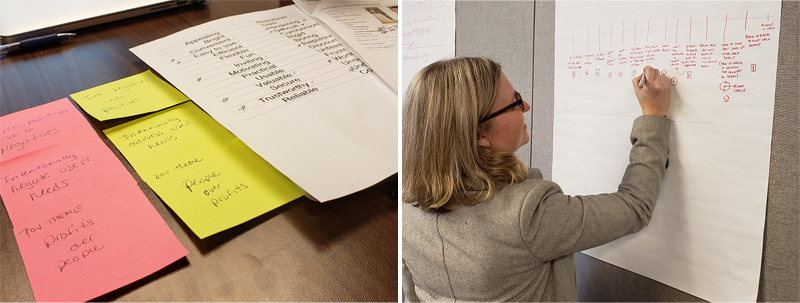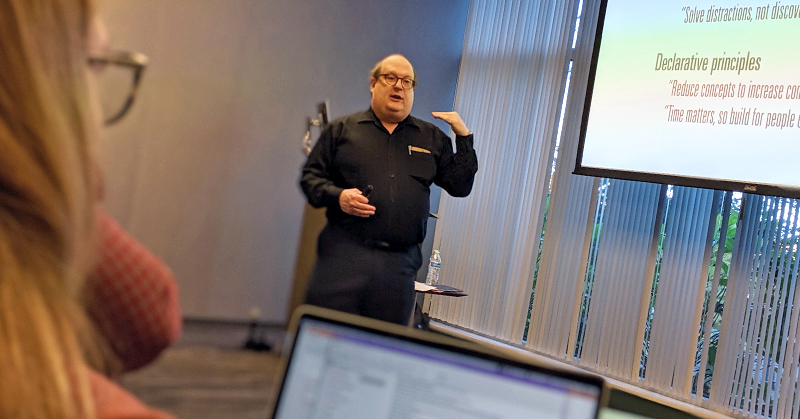In early November, my colleague Erin Lemieux and I attended Jared Spool’s workshop, Design for Delight, Transforming Your Designs from Good to Great Deliver the Most Delightful Experiences to Your Users, hosted at the Microsoft offices in Burlington, MA. This full-day workshop centered on learning the framework for bringing delight to users through pleasure, flow, and meaning.
Jared, co-founder of Center Centre and the founder of UIE, first introduced the Kano Model, a set of ideas and techniques for understanding how much investment it takes for a company to increase customer satisfaction. This model consists of 2 axes: User satisfaction (frustration to delight), and investment (low to high), on which basic expectations, performance payoffs, and excitement generators can be plotted.

The Kano Model: a tool for predicting user satisfaction
The excitement generators are the delighters that go beyond user expectation to create innovative, memorable products and experiences. But over time, excitement generators become basic expectations. Think about how a hotel with wifi was cutting-edge 15 years ago, but today it’s an expectation. This is why it’s so important to continually conduct user research to understand evolving user expectations and goals over time.
So how do we create excitement generators? Jared outlined noted author and UX expert, Dana Chisnell’s three approaches teams can take for designing for delight: Pleasure, Flow, and Meaning. We can hit any or all of these approaches in our designs on our mission to create delight, but it’s still important to remember that delight will only occur if the user’s basic expectations are met (hint: user research!).
 Putting despicable design to use with a user scenario
Putting despicable design to use with a user scenario
To practice these approaches, Jared introduced despicable design. We “went evil” and crafted the most awful experience we could think of for our intended user. We relished in every moment we made our user just a little more miserable, a kind of backwards way of creating sympathy. Then, we did the opposite and created the most positive experience we could think of for our user. We noticed our thinking was more empathetic and focused based on what we discovered on the negative path—something that may not have happened had we only thought through the positive experience.
Creating the negative design let us be creative without judgement, allowed us to gain confidence in expressing our ideas, and put us in the mindset of the user.
This workshop had a lot of great take-aways, but despicable design resonated the most with us. Creating the negative design let us be creative without judgement, allowed us to gain confidence in expressing our ideas, and put us in the mindset of the user. After going negative, our minds were ready and primed for designing for delight. This exercise would be great to use with a group of designers and non-designers alike, as a way to bridge that artificial gap we sometimes place between us. Plus, it’s a fun way to break the ice in a brainstorm while keeping teams focused on the user needs.
